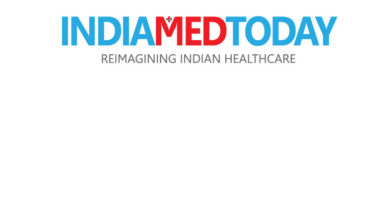
Discussions were held on interventional radiology, a subspecialty of radiology that uses image guidance to perform minimally invasive procedures
The four-day 23rd Annual Conference of the Indian Society of Vascular and Interventional Radiology (ISVIR) recently concluded in Hyderabad.
Dr Suyash Kulkarni, President, ISVIR; Dr Balaji Patel Kola, Vice-President, ISVIR; Dr Ajith Yadav, Secretary, ISVIR; Dr Arvind Gupta, Past Secretary, ISVIR; Dr Abhishek Chauhan, Executive Member, ISVIR and Dr Dheeraj Tiwari, Executive Member, ISVIR; shared interesting insights from the conference, with the media. Interventional radiology is the most promising and evolving speciality, transforming medical care through minimally invasive procedures, for most of the simplest and most complex ailments needing traditional critical and life-threatening surgeries. The speciality has made enormous progress in ensuring minimally invasive care, speedy recovery and quick return to the routine of patients.
Dr Kola said, the conference showcased some innovative interventional radiology procedures including Prostatic artery embolisation, Genicular artery embolisation and Liver tumour microwave ablation. Prostatic artery embolisation is performed for benign prostatic hypertrophy in elderly males. It helps curb enlargement and shrinks the prostate, thus providing symptomatic relief, with very less side effects and almost no recovery time. Genicular artery embolization in osteoarthritis of the knee is performed to delay the disease progression, it enables long-term pain relief and lessens the dependency on pain medication in all patients. For liver tumour microwave ablation, interventional radiology helps to delineate the tumour, remove the lesion causing necrosis and eventually help to recover without performing surgery, chemo or radiation therapies.
Dr Yadav said, “Over a thousand delegates from India and abroad attended the Conference and eminent faculty from India and 13 other countries imparted knowledge to the delegates on the latest developments. The conference had more than 30 sessions and 250 scientific lectures. We conducted 30 workshops to train young doctors on various techniques.”
Dr Chauhan said, “While everyone knows Radiology as a mode to diagnose disease, however not many in India are familiar with interventional radiology. Over a period, radiology has evolved from being a diagnostic tool, into an efficient mode of treatment as well. Since interventional radiology is minimally invasive, the duration of hospitalisation is drastically reduced and the treatment outcomes are exceptionally good, thus providing the best possible care to the patients.”
Dr Tiwari said, “Interventional radiology offers multiple pinhole procedures to treat different ailments like cancers, to prevent bleeding and other diseases, and serves as an alternative to surgeries.”
Interventional radiology, a subspecialty of radiology, uses image guidance to perform minimally invasive procedures. Some of these procedures are done for purely diagnostic purposes like Angiography, while others are done for treating patients. Improvements in imaging techniques and their wider availability over a period played a major part in the growth of Interventional Radiology in India. The Specialty has seen exponential growth in recent years and all hospitals and institutions claiming to provide comprehensive care, have Intervention radiology as an integral part of their services. The annual number of procedures performed countrywide has grown from under 5,000 in 1999 to more than a lakh in the last year. The number of centres performing these procedures has grown exponentially from eight institutions at the time of inception of the Indian society to over 500 today.

